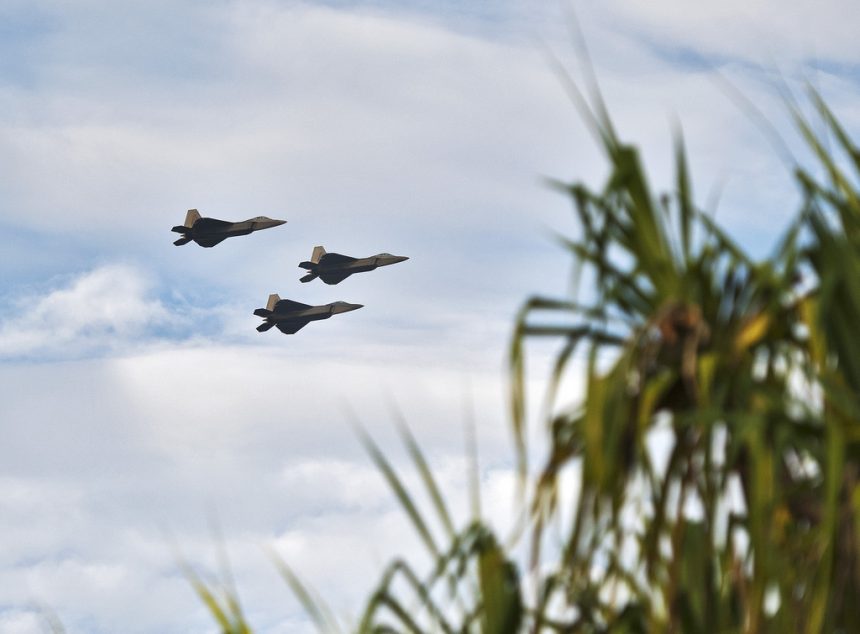An F-22 Raptor, assigned to the 199th Fighter Squadron, Hawaii Air National Guard, 19th Fighter Squadron, U.S. Air Force, sustained 1.8 million USD in damage in a landing incident at Joint Base Pearl Harbor – Hickam, on Dec. 7.
The aircraft was returning to its homebase from a training exercise, about 90 minutes after conducting a Missing Man Flyover during the 71st Anniversary Pearl Harbor Day Commemoration ceremony at the Pearl Harbor Visitor Center, and scraped both horizontal stabilizers on the runway at Hickam as it landed.
Although the cause of the mishap is being investigated, tailstrikes are often caused by human error on aerodynamic braking procedure.
Aerodynamic braking is a braking techinique used during landing to reduce the speed of the plane until wheel brakes can be effectively applied. It is used on wet or slippery runways to prevent skidding. As soon as the main landing gear touches the runway, the pilot pulls back on the stick to keep the nose high, thus exposing a significant plane’s surface area to the airflow. The increased drag helps to slow the plane.
Obviously, when the plane’s nose is high, the tail is close to the ground. Sometimes a bit too close…
Last month an F-22 with 43th Fighter Squadron crashed near Tyndall Air Forcer Base, Florida. Fortunately, the pilot ejected safely from the doomed 150M USD plane.














